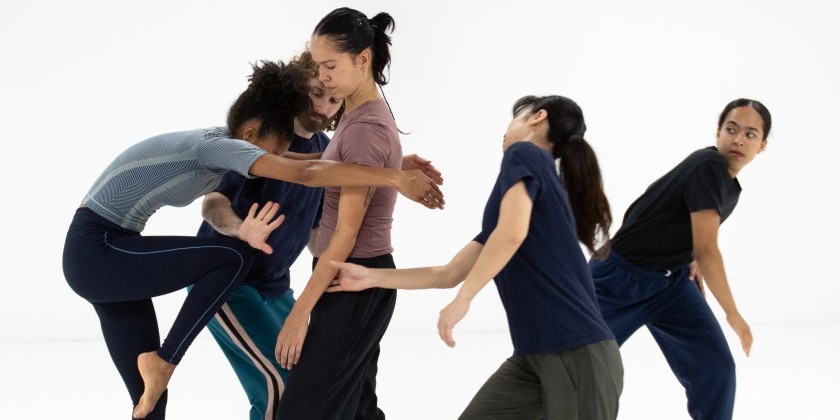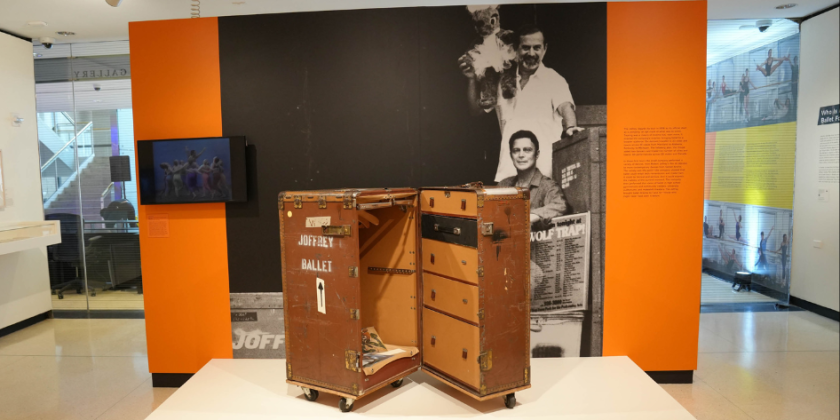DAY IN THE LIFE: GREYZONE & Emily Kessler/POGO On Their Evening of New Works

WHAT: TWO DANCES
WHO: GREYZONE & Emily Kessler/POGO Present an Evening of New Work
WHERE: Duffy Performance Space at Mark Morris Dance Center, 3 Lafayette Avenue, Brooklyn, NY
WHEN: Friday, September 20 and Saturday, September 21, 2024 @ 7 PM
TICKETS: Click here
In case you’re unfamiliar (I was), a “rumble strip” is that thing on the side of the highway that makes your car buzz when you drift too close to the edge.
It’s also the title of Emily Kessler/POGO’s new work, to be presented this weekend alongside AMPLITUDE by Lindy Fines, artistic director of NYC-based multimedia dance project, GREYZONE.
Rumble Strip and AMPLITUDE share many qualities, including titular allusions to deep, vibrating, resonant sounds and rich commitments to form. Emily and Lindy have known each other for a while, and deepened their kinship in the residency program at MOtiVE Brooklyn.
“The impulse to co-produce came from the realization that we are both making form-driven, highly physical, and complex group works,” Lindy shared. But the titles, “AMPLITUDE and Rumble, were a coincidence.”
Emily and Lindy describe their dances using similar language. “Form” and “formal” come up frequently, even if this means something different to each maker.
Emily remembers using the metaphor of an Etch A Sketch in rehearsals. “It’s not so much the shaking… It's more like how after a period of time, the drawing starts to dissolve. The echo of the movement that dancers create in the space decays over time. I’m also thinking about flower foam — a clear, specific medium, where an imprint leaves behind a lot of texture.”
The nature of Emily’s process — her commitment to the dancers distinctly shaping the space they’re in — results in something formal and structured. Rather than emerging as a tonal or aesthetic choice, form arises out of the dance’s specificity and intensity.

For Lindy, form refers directly to Western dance traditions. “[Ballet and modern] were my training, and [those forms] are what I know and enjoy working with,” she shared. “I think it also means lines, shapes and gesture… anything that is codified. It’s also about the relationships of bodies to each other and to the space.”
These works, posited together in one evening, pose important questions about the meaning of “form” in our field and community.
“All of my work is ultimately about the people that inhabit it,” Lindy said. “The dancers that are in the room with me inform the work… We are working, sweating, struggling, celebrating. Sometimes we’re emotional, sad, or just super tired. We’re all doing this because we love it. Otherwise we wouldn't do it — as we all know, there’s no money in it. There’s something so powerful about that love and commitment to dance and each other, and I try to harness some essence of that in the final work.”
Emily shared that “the dancers in the work are responsible for shaping their container.” I inquired about some word choice in her description of Rumble Strip: “kinetic sculpture and force majeure.” I was curious about the dancers’ agency inside of the work. She added:
“The dancers are creating the dance ‘pillars’ [phrases, duets, trios, etc.] that are repeated throughout the piece… that come back with intensity and depth. Like a calcification. Each time the structure disintegrates or breaks, it's coming from within. The world isn’t putting pressure on them; they are shaping the world.”
To me, the affinities between Rumble Strip and AMPLITUDE transcend aesthetic and name, and are no coincidence. Emily and Lindy each articulated commitments to ritual and repetition, methods which exist extrinsically and intrinsically to the making of a dance. For Emily, this process — this calcification — is most resonant inside the work. Lindy shared that she is “moved by the ritual of stepping back into class and repeating movements over and over again…”

“The ritual of warming up and preparing the body. The repeated runs of a work. Tech and dress rehearsals. I’m inspired by gathering together in this one pursuit, trying to make it all come together as a team. The discipline, the camaraderie. These are the things that I love and want to celebrate.”
By nature, dance is both communal and fleeting. In the moment of performance, the dancers conjure the atmosphere and the material. The space is altered by their ongoing choice to alter it, shaped by their resolve to shape it. Performance is a temporary gathering in a temporary realm — among and between performers, audiences, and makers.
These TWO DANCES offer an important meditation on what it means to make dance — to make work that is deeply precise and essentially ephemeral. Don’t miss them at Mark Morris Dance Center.












